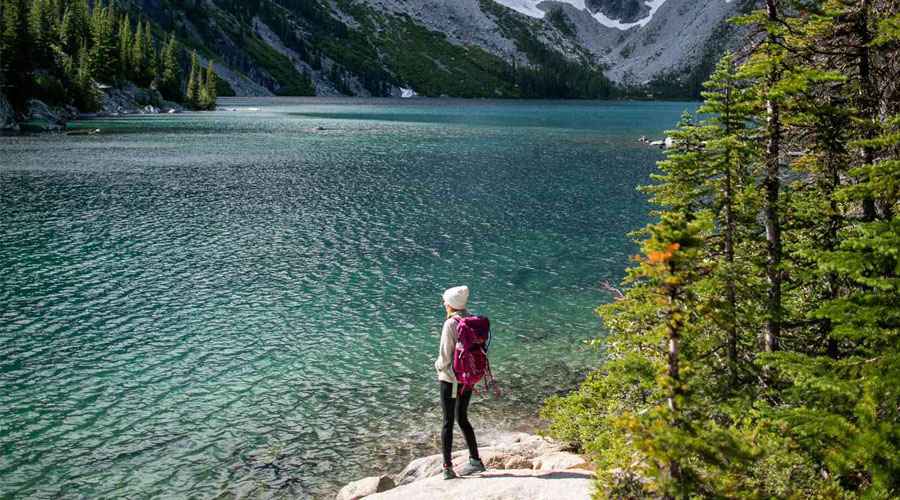Mountains have always captured human imagination, standing tall as symbols of strength, endurance, and mystery. Among the countless peaks scattered across the globe, none is more famous or more revered than Mount Everest. Known as the highest point on Earth, Everest is not only a geographical wonder but also a cultural and spiritual icon, drawing climbers, explorers, and dreamers from every corner of the world.
Location and Height of Mount Everest
Mount Everest sits proudly in the Himalayan mountain range, straddling the border between Nepal and the Tibet Autonomous Region of China. As of the most recent official measurement conducted jointly by Nepal and China in 2020, the mountain rises to an astonishing 8,848.86 meters (29,031.7 feet) above sea level. This height makes it the tallest mountain in the world by elevation, surpassing all other terrestrial peaks.
Everest has two major climbing routes:
The Southern Route through Nepal, which is the most commonly used and considered the traditional path to the summit.
The Northern Route in Tibet, which is less crowded but equally challenging.
Both routes offer dangers and difficulties, making Everest a test of both human endurance and the will to survive.
Names of Mount Everest
Though the world knows it as “Mount Everest,” the peak goes by many names that reflect the cultures and languages of the region.
In Nepali, it is called Sagarmatha, meaning the “Forehead of the Sky.”
In Tibetan, it is called Chomolungma, which translates to “Goddess Mother of the World.”
Its English name comes from Sir George Everest, a British surveyor general of India in the 19th century. While George Everest himself reportedly never wanted the mountain named after him, the name became widely accepted internationally.
These names highlight not just geographical importance, but also the deep spiritual significance the mountain holds for local populations.
Discovery and Measurement
Mount Everest’s fame stems not only from its intimidating height but also from the story of how the world came to recognize it as the tallest peak. In the 19th century, British surveyors working on the Great Trigonometrical Survey of India systematically measured the Himalayan peaks.
In 1856, the mountain was labeled Peak XV, and further calculations revealed it exceeded all other known peaks in height. Gradually, it gained its stature as the highest mountain in the world—a distinction that continues to this day.
Over the decades, Everest’s height has been measured several times:
- 1856: 8,840 meters (29,002 feet)
- 1955: 8,848 meters (29,029 feet) by an Indian survey
- 2005: 8,844.43 meters (29,017 feet) by a Chinese survey
- 2020: 8,848.86 meters confirmed jointly by Nepal and China, now the official figure
The First Climbs and Historic Expeditions
For centuries, Mount Everest was seen as an unclimbable giant. Yet, as mountaineering advanced, adventurers dared to imagine reaching its summit. The early 20th century saw daring expeditions, especially from the Tibetan side.
One of the most intriguing events occurred in 1924, when British climbers George Mallory and Andrew Irvine disappeared high on the slopes. To this day, the mystery remains: Did they reach the summit before their tragic end?
The first confirmed ascent of Mount Everest came on 29 May 1953, when Sir Edmund Hillary of New Zealand and Tenzing Norgay, a Sherpa from Nepal, stood triumphantly on the peak. Their success marked one of humanity’s greatest achievements in exploration.
Since then, thousands of climbers from around the world have attempted Everest, some succeeding, others tragically losing their lives along the way.
The Challenges of Climbing Everest
Scaling Mount Everest is not simply a physical climb—it is a battle against nature at its harshest. Climbers face:
- The Death Zone: Above 8,000 meters lies the “death zone,” where oxygen levels are critically low, and human survival becomes extremely difficult.
- Harsh Weather: Temperatures can drop below -40°C, and sudden blizzards or winds can transform conditions in minutes.
- Avalanches and Icefalls: The Khumbu Icefall and steep snow slopes are notorious for deadly avalanches.
- Altitude Sickness: Many climbers suffer from hypoxia (lack of oxygen), cerebral edema, or pulmonary issues.
Despite high-tech gear and improved acclimatization strategies, Everest remains one of the most dangerous undertakings in mountaineering.
Sherpa Culture and Everest
One cannot talk about Everest without acknowledging the invaluable role of the Sherpa people. Indigenous to Nepal’s highlands, the Sherpas are known for their exceptional mountaineering skills, endurance, and deep knowledge of the mountain.
Sherpas not only assist expeditions by carrying supplies and guiding climbers, but they also see Everest as a sacred place. For them, every expedition carries spiritual meaning, and they often perform rituals to honor the mountain deities before beginning a climb.
Environmental Concerns
Mount Everest has increasingly become a victim of its own popularity. The rising number of climbers has brought with it pollution, litter, and waste, leading to the nickname “the world’s highest garbage dump.” Abandoned tents, oxygen bottles, and even human waste have accumulated on the slopes over decades of climbing expeditions.
Both Nepal and China have introduced strict rules to manage the number of climbers and have launched cleanup campaigns. Expeditions are now encouraged, and sometimes required, to bring back all waste, helping preserve the mountain for future generations.
Mount Everest in Modern Times
Today, Mount Everest continues to inspire explorers and thrill-seekers. Advanced gear, satellite communication, and helicopter rescues have made climbs more accessible than in the past, but Everest is far from an easy feat.
What was once a dream of elite explorers is now pursued by hundreds each year, including climbers from all walks of life—teachers, doctors, engineers, and adventure enthusiasts. Some climbers attempt unique feats, such as skiing down the mountain, paragliding from its summit, or climbing without supplemental oxygen.
Symbolism of Everest
More than just a mountain, Everest has become a symbol of human aspiration. It represents the innate drive to challenge limits and reach new heights—both literally and metaphorically. For many, standing on Everest’s summit is less about conquering nature and more about conquering personal boundaries.
The phrase “to climb one’s own Everest” has entered language as a metaphor for tackling life’s greatest challenges.
Conclusion
Mount Everest is not only the highest mountain on Earth but also a monument to human courage, ambition, and respect for nature. Rising 8,848.86 meters, it dominates the world physically and culturally. From the Sherpa communities who call it divine, to the climbers who dream of reaching its summit, Everest remains one of the most powerful symbols of resilience and exploration.
While it poses immense dangers and environmental concerns, its magnetic pull ensures that Mount Everest will always remain at the center of human imagination. It is not just a mountain—it is a reminder that even in the most daunting challenges, there lies the possibility of greatness.


